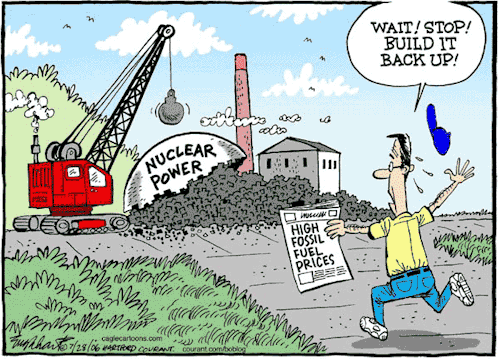Is the United States doing enough in the race towards combatting climate change? Whether you’re a climate change believer or denier, is there an economic threat to the US if we don’t take action? Are other countries leading the way in environmental policy while the U.S. is falling behind?
At a panel at the Global Energy Summit at Columbia University, Diane Regas, Executive Director at the Environmental Defense Fund, expressed her concern with the competitive threat to the U.S. from other countries around the world. China just canceled 103 coal plants which will eliminate 120 gigawatts of future coal-fired capacity. In addition, China is planning to invest more than $360 billion through 2020 in building renewable energy infrastructure and as a result creating more than 13 million jobs in the sector. Take France as an additional example: “It is laughable that we are not following in the footsteps of France. It already has a near zero electricity mix using technology perfected in America,” blurted Jim Connaughton, former Chairman of the White House Council on Environmental Quality for President George W. Bush. There are many unnecessary regulatory and permit restrictions that are halting the environmental policies coming out of Washington as well as making it very difficult for anything to get done. About two-thirds of the American public disapproves of the way President Trump is handling environmental policy issues, and in turn is affecting our competitive stance across the world.
Karen Harbert, President and CEO of the Institute for 21st Century Energy, U.S. Chamber of Commerce, wanted to remind us that the U.S. is not a lost cause. President Trump inherited an economy growing at less than 2% annually, below our historical performance capability. According to Harbert, Trump is looking at the economy and putting energy and environment on the same level. Under President Obama, the environment came first and everything else followed behind. Europe put climate change first and as a result, energy costs increased, industries moved to the U.S. and became less productive, and now they are turning on some of their older fossil fuel plants. It is important to embrace the three E’s (economy, energy, and environment) and find the perfect balance that is most profitable for our country. “Perry, Zinke, and Pruitt have all said that we are here to grow the economy but not to do it at the expense of the environment and to capitalize our abundant resources.” It is important to look at this energy abundance as an asset, not a liability, and to capitalize on the fact that all 50 states are now in the energy business.
Dr. Phil Sharp, former President of Resources for the Future and the current moderator for this panel asks, “Are you satisfied that we are moving ahead at a reasonable pace or does it need to be pushed along by carbon taxes and other regulatory policies?” We, as a country, have made progress but not enough progress, as both Harbert and Connaughton pointed out. On a global level, we all have to work together. “There is no single institution and there cannot be any single institution that can adequately solve climate change,” Regas firmly stated. The Clean Power Plan, the Paris Agreement, etc. are not going to get us to reach our goals. We can’t spend all of our political capital and time focusing on these plans. There is a lot happening in our country and around the world. Walmart alone is eliminating 1 gigaton of carbon emissions. To put into perspective, 1 gigaton is more than the annual emissions of the entire country of Germany. This is a great step towards eradicating climate change, but it is still not enough. “We need innovation, new technology and we need to drive the markets.”
“What is the position of nuclear power as a portion of our portfolio?” Dr. Sharp specifically asked Bob Perciasepe, President of the Center for Climate and Energy Solutions and former Deputy Administrator of the U.S. EPA. He believes we need a solid base of nuclear power. The closing of Indian Point Nuclear Power Plant will put a 2,000 MW deficit in our baseload electricity supply in the New York City and Westchester area. Nuclear power is inexpensive and has zero emissions. This deficit will most likely be replaced by natural gas, which will increase emissions in comparison to where they are currently. We need carbon capture and storage on the fossil fuel side and we need more nuclear power than we have today.
Harbert agreed by adding that nuclear power is challenged by the natural gas market and in some cases, by incentives for renewable energy. Nuclear power plants have a business model problem, where O&M (operation and maintenance) costs are very high, and a capital crisis problem where the permitting and litigation processes are incredibly lengthy and unattractive to possible investors. She concluded that instead of making old fossil fuel energies more expensive, we should make the new clean energies less expensive and allow everyone to compete in the market fairly. When all the power generating fuels are not being treated equally, there are economic problems that may arise.
Read on to learn about the Renewable Energy Paradox and Nuclear Power Plant subsidies
 Top Sustainability Trends to Watch in 2025
Top Sustainability Trends to Watch in 2025

 Log In
Log In








